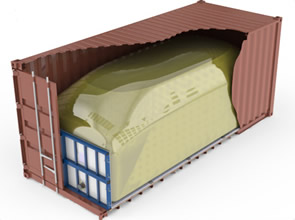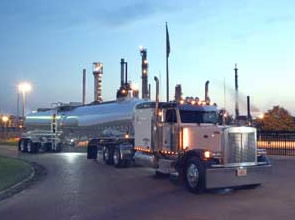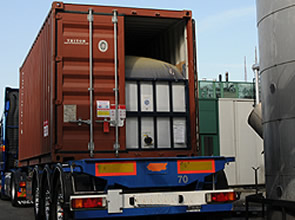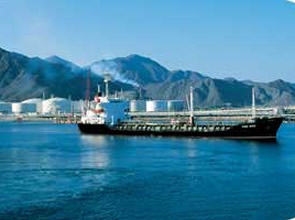Properties of Base Oils
Base stocks
Are called by several names: Neutrals (100N, 150N, 600N, …), Bright Stocks, Grades (SAE 5, 10…; ISO 22, 32..). The most common names are for group I (SN: Solvent Neutral), for group II (N: Neutrals) and group III grade names refer to the viscosity (4cst, 6cst, 8cst …). Grade names can also refer to trademarks.
Please note below example:
| Group |
Grades |
|
|
|
| I |
SN150 |
SN500 |
BS150 |
|
| II |
N150 |
N325 |
N600 |
|
| III |
2cst |
4cst |
6cst |
8cst |
Base Oil Production
The quality of Base Oil has evolved with the process technology. The first generation of process technology was developed to remove aromatics and other impurities. With the Solvent Processing Technology , it was possible to recover wax as a byproduct and lower the pourpoint and the simply hydrofining also added to the further reduction of impurities. In third phase the Hydroprocessing Technology was developed and this changed the base oil business from “Physical separations” to “Chemical transformations”. The technology could produce lighter viscosity grades, which was a popular option for the refineries. Some refineries use also Wax Isomeration to produce very high quality base oils.
In a nutshell the base oil production process works as follows:
- Feedstock is separated into distillates and vacuum gas oils
- Waxy vacuum gas oil molecules flow to the hydrocracker to begin conversion
- Hydrogen is introduced to saturate the molecules and remove impurities such as nitrogen, sulfur, oxygen and heavy metals.
- Hydrocracking, under conditions of extreme temperature and pressure in the presence of a catalyst, converts aromatics molecules into saturated paraffins.
- The altered stock is noticeably lighter in color due to the absence of contaminants.
- Long waxy paraffin molecules are restructured into shorter, branched isoparaffins that resist gelling and improve low temperature pumpability.
- Hydrogen is introduced again to remove any remaining aromatics and
impurities, enhancing the oxidation and thermal stability of the now colorles oil.
Density
Density means the volume weight of a substance. In oils, it is usually indicated in the temperature of +15°C or +20°C, in units kg/m3. Lubricant densities range between about 700 and 950 kg/m3, depending on the quality, viscosity and additive content of the lubricant.
Viscosity
The thicker a fluid is, the greater its viscosity. Nowadays, lubricant viscosity is usually expressed with the units centistoke (mm2/s) and centipoise (mPas).
Centistoke (cSt) Centistoke is a unit of kinematic viscosity, based on the amount of force required to beat the internal friction of fluid. Centipoise (cP)
Centipoise is a unit of dynamic viscosity, often used for expressing the internal friction of oil in low temperatures. The connection of cSt and cP is cP = cSt x fluid density. The temperature must always be given when expressing viscosity with any unit. All oils become much thinner as the temperature rises. A typical viscosity of motor oil SAE 10W at a temperature of -20 °C may be 2,000 cP, but if it heats up to a temperature of +100 °C the viscosity is only 5.2 cSt. Kinematic viscosity is measured by the pictured Ubbelohde viscometer. It measures the time the oil requires to flow from point m1 to point m2.
Viscosity index
Viscosity index (V.I.) describes the fluid’s tendency to thin as the temperature rises. The stronger the fluid thinning the smaller the viscosity index. The V.I. of single-grade motor oils is about 95-110, and that of multi-grade motor oils even higher than 200.
Flash point
The flash point expresses the flammability of a fluid. Flash point is the temperature at which, measured from the fluid with a certain method, flammable gases are vaporized so much that they flame up when ignited with a naked flame, but the fluid does not carry on burning.
Pour point
Oil thickens as the temperature falls. At a certain temperature it no longer flows by its own weight. This temperature is called the pour point. The pour point depends on, e.g., the viscosity and chemical structure of the oil. In paraffinic oils, stiffening is caused by the wax in the oil, which is distinguishable as crystals. The more the oil cools down the bigger the crystals grow, eventually forming a flow-preventing network within the oil.
Naphthenic oils have less or no wax, and they remain fluid in lower temperatures than paraffinic oils. The oil eventually becomes so stiff that it no longer flows with its own weight. Fully synthetic oils do not contain wax and their cold properties are excellent.
The pour point can be improved by using an additive that prevents the growth and interconnection of wax crystals. With the pour point, it is possible to describe approximately the cold start properties of oil, but in many cases it is not enough; it is more important to know the true oil viscosity at the starting temperature.
Recycled Base Oil: Spindle Oil, SN100, SN150, SN200, SN300, SN350, SN500, BS, RPO
 |
 |
| Flexitank |
Bulk by truck |
 |
|
| Drums |
|
Virgin Base Oil: SN90, SN100, SN150, SN350, SN500, SN600, SN700, SN1000, Bright Stock
 |
 |
| Flexitank |
Bulk by vessel |
|
Base Oils
|